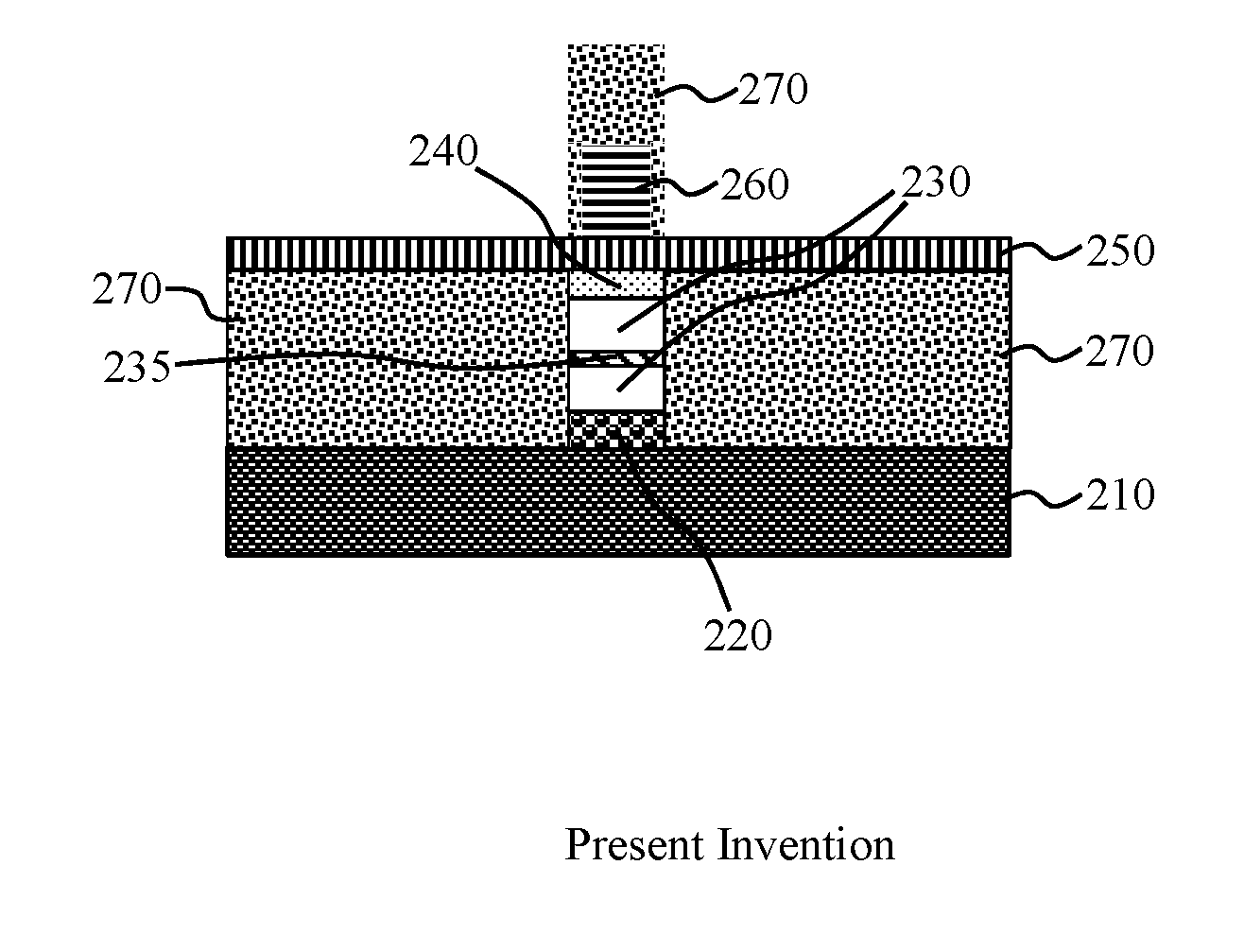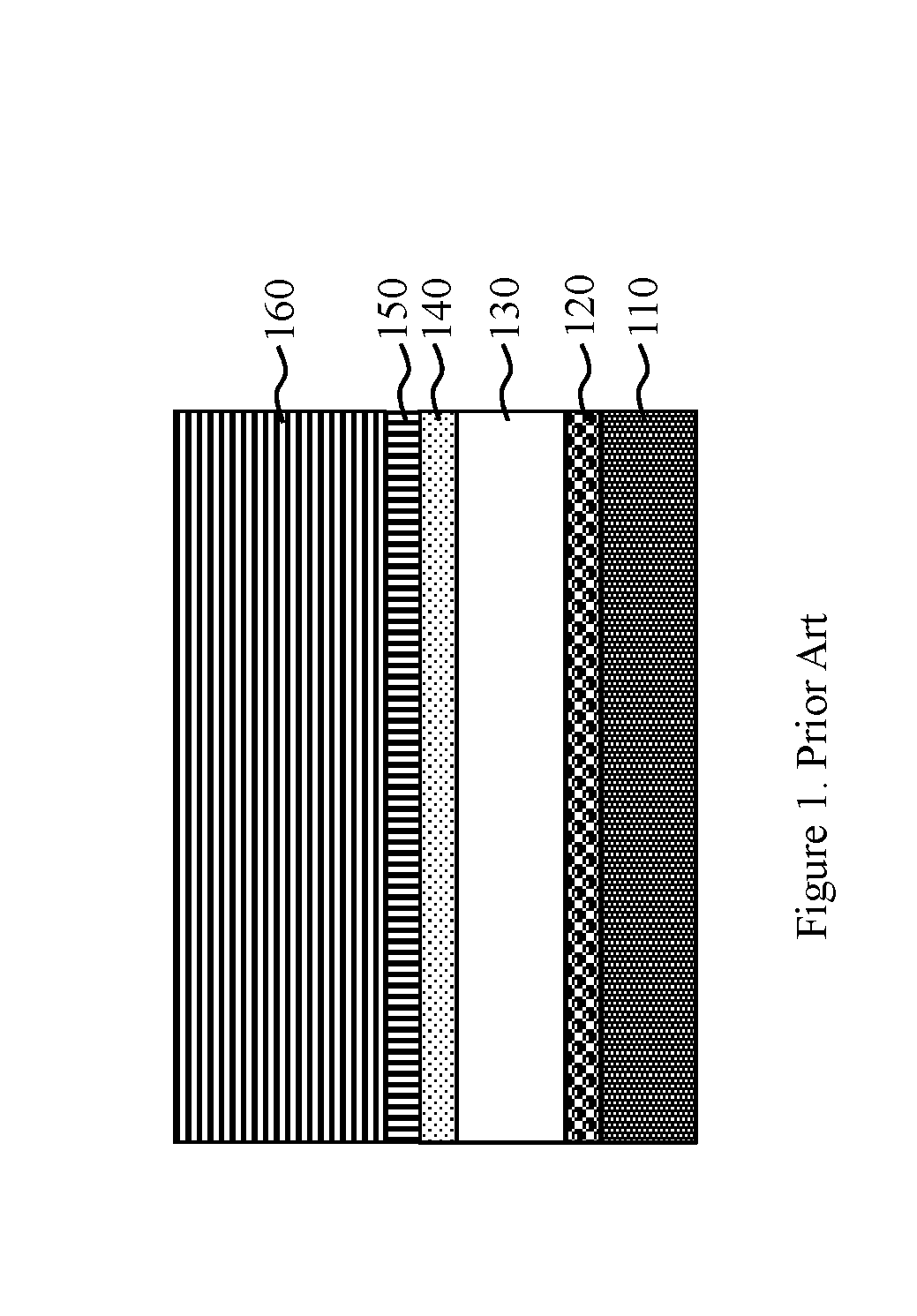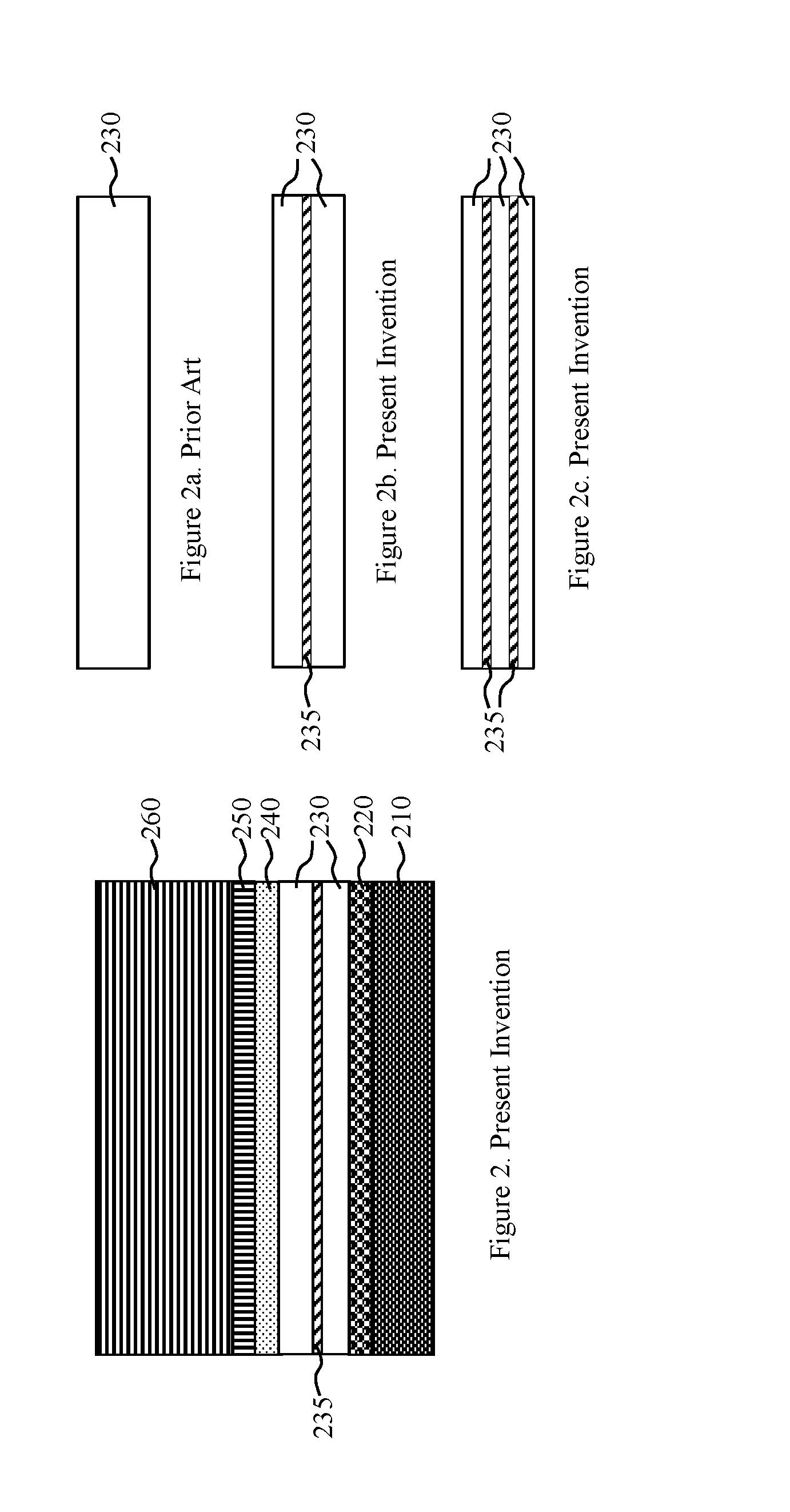An improved method to make of fabricating ic/mram using oxygen ion implantation
a technology of oxygen ions and implantation, which is applied in the field of spinelectronic devices, can solve the problems of increasing the cost of increased write current, reducing the write current, and not having enough magnetic crystalline anisotropy to achieve thermally stable perpendicular magnetization, etc., and achieves the effect of effectively capturing oxygen ions and thicker ogls
- Summary
- Abstract
- Description
- Claims
- Application Information
AI Technical Summary
Benefits of technology
Problems solved by technology
Method used
Image
Examples
Embodiment Construction
[0030]Similar to the earlier invention, our memory device still contains five core film stacks (FIG. 2): an ion implantation stopping layer (IISL) at the bottom (210), two oxygen getter layers (OGLs) (220&240) sandwich the middle magnetic layer magnetic memory layer (230), an ion-capping layer (250), and an ion-mask layer (260).
[0031]To better capture the oxygen ions implanted in the memory region, thus forming a uniformly distributed metal oxide dielectric (230 in FIG. 2) in the photolithography exposed area outside the device, we add an ultrathin oxygen-getter layer (235 in FIG. 2) into the middle magnetic layer. Such an OGL is selected from Mg, Zr, Y, Th, Ti, Al, Ba, with Mg as a preferred material due to its close MgO crystalline lattice match with the memory material. The thickness of such oxygen-getter layer (OGL) must be thin enough (230).
[0032]The IISL (210) typically contains a heavy metal with large atomic number, selected from Hf, Ta, W, Re, Os, Ir, Pt, Au, with a thickne...
PUM
 Login to View More
Login to View More Abstract
Description
Claims
Application Information
 Login to View More
Login to View More - R&D
- Intellectual Property
- Life Sciences
- Materials
- Tech Scout
- Unparalleled Data Quality
- Higher Quality Content
- 60% Fewer Hallucinations
Browse by: Latest US Patents, China's latest patents, Technical Efficacy Thesaurus, Application Domain, Technology Topic, Popular Technical Reports.
© 2025 PatSnap. All rights reserved.Legal|Privacy policy|Modern Slavery Act Transparency Statement|Sitemap|About US| Contact US: help@patsnap.com



